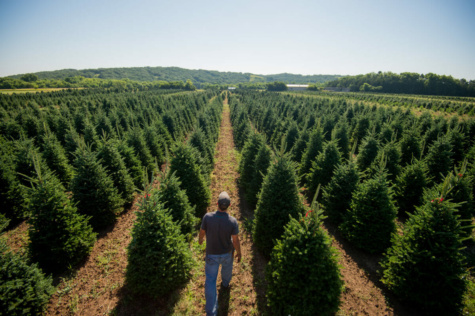
Sophia Yeskulsky | Writer
December 7, 2023
‘Tis the season once more, where families nationwide seamlessly transition from the warmth of Thanksgiving to the festive embrace of Christmas. Decorations emerge from storage as houses are decorated with pretty colored lights, festive wreaths hang from doorways, and stockings find their place in the living room. Amidst this festive flurry, a pivotal annual decision looms for families. The age-old dilemma surfaces and sparks debates and considerations, as each household grapples with the timeless question: will they put up a fake or a real Christmas tree?
As the economy has experienced inflation, there was a major price increase for authentic Christmas trees. Compared to last year, the price of real Christmas trees has increased by over 10%, and in the last 3 years, they have increased by over 125%. This year, it going to be a challenge to find an average-sized tree (5-6 ft) for under $100.
Inflation has also affected artificial Christmas trees. Balsam Hill, a popular producer of artificial Christmas trees has increased their prices by over 30%. As for them, a 7 1/2-foot tree that sold for $899 in 2020 is selling for $1,199 this year. For most, paying over a thousand dollars for an artificial tree is extreme, however, Home Depot does have 7 ½- foot trees ranging anywhere from $200-$300.
Besides cost, another major factor in the decision is convenience. Juniors Brianna Diaz and Coco Bush who both own fake trees expressed that, “There’s no mess, it doesn’t die, and it’s easy to assemble.”

However, with the 21st century, a surge of environmental awareness and a drive to protect our environment was brought about. So, what is the most environmentally friendly tree? Contrary to popular belief, real Christmas trees are better for the environment. Approximately 90% of artificial Christmas trees are transported globally from China, leading to a rise in both carbon emissions and resource consumption.
Additionally, due to the materials used in their production, the majority of synthetic trees lack recyclability, ultimately culminating in their disposal in local landfills. Real trees don’t require over sea shipping and by buying a real tree, you are supporting forests. Among the 350-500 million trees cultivated on U.S. tree farms, only 30 million are annually selected for Christmas. Opting for real trees contributes to the survival of tree farms, thereby preserving the lush forest habitat crucial for wildlife survival on their lands.
So, as you embark on this festive season and ponder the age-old question of a real or fake Christmas tree, take a moment to consider all these factors and what fits best for you and your family.

Leave a Reply